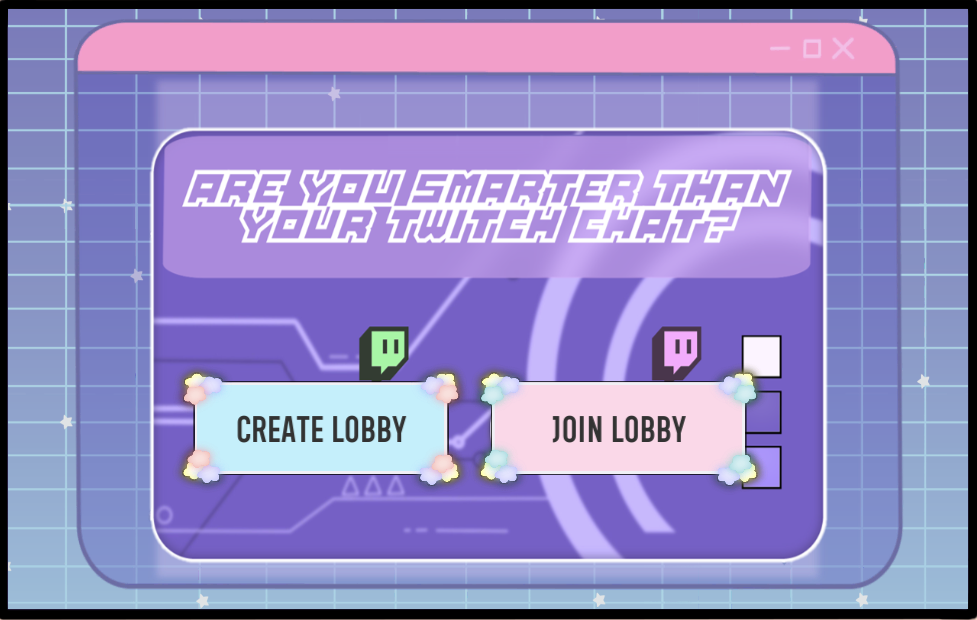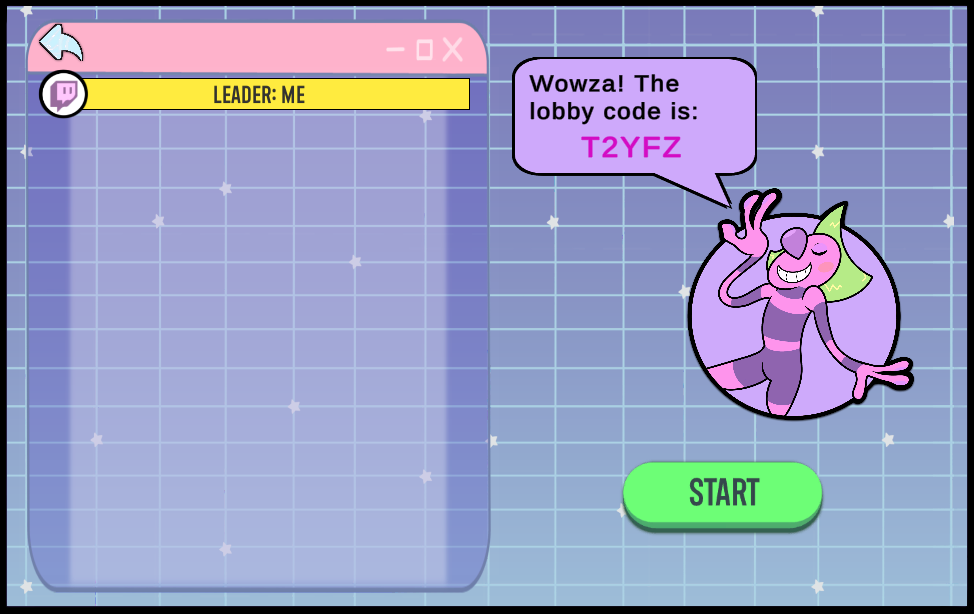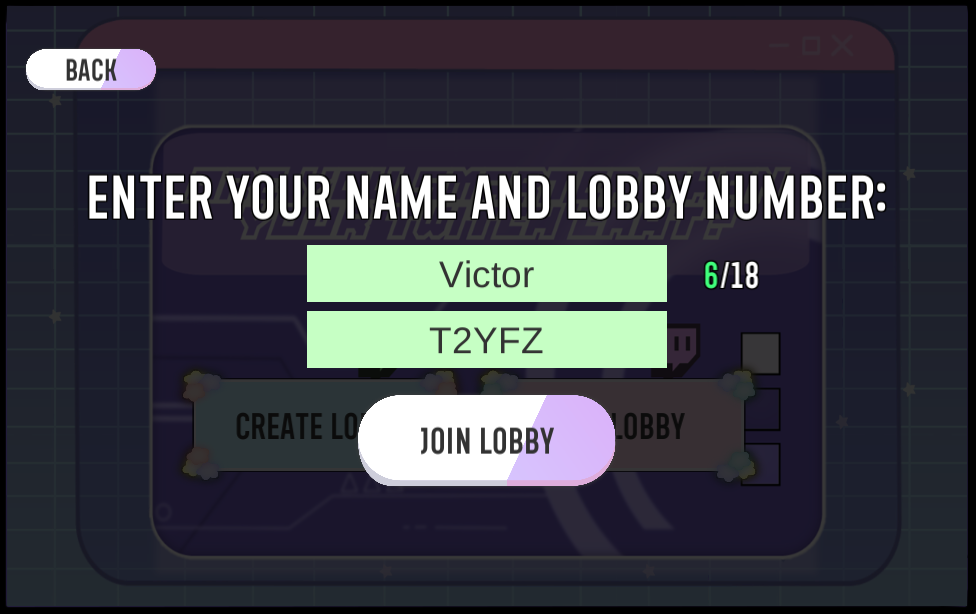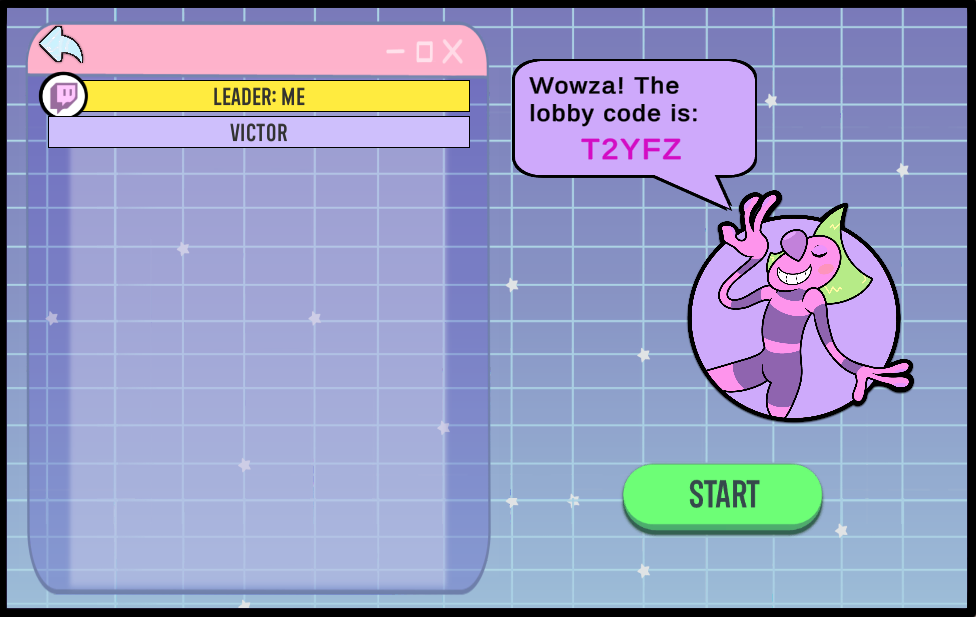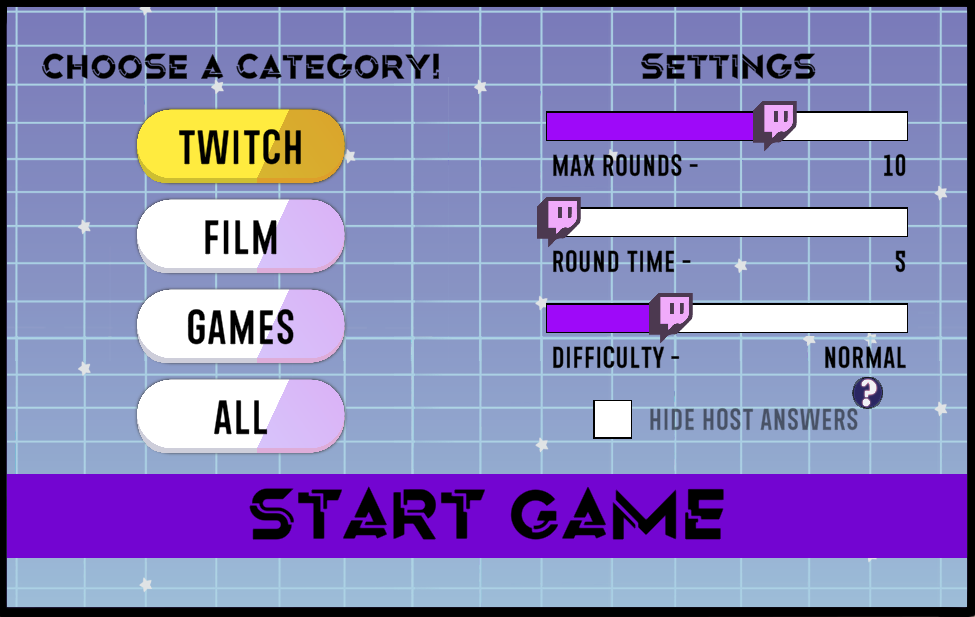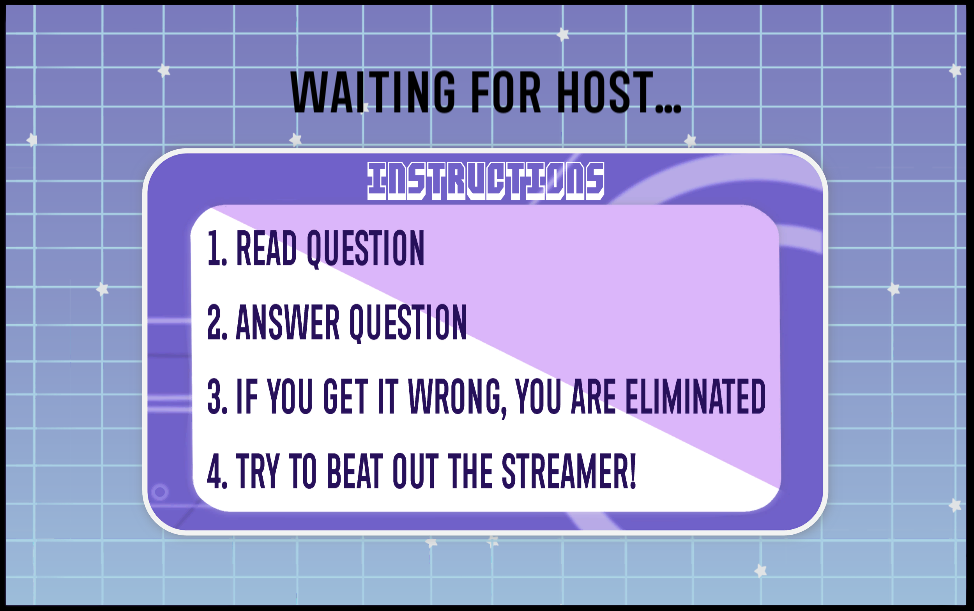Project Summary
Partyception is a fast-paced party-style trivia quiz game that can be played with any number of people. There are a several categories of trivia to choose from, and customizable lobby rules like question difficulty, count, and timer length allow players to adjust the game to their liking. The game is played in-browser and by default is intended to be played in very short periods of time, so players can enjoy the game at any moment.
This game was developed by team Last Braincell, a 6-member team consisting of me, writers Alex Kohl and Catherine Kim, artists Ashli Black and Zach Thomsen, and coder Victor Do. We previously developed Qualified Immunity in late 2021 as a 5-member team, and were joined by Zach prior to this project’s inception. Zach integrated seamlessly with the existing team members, and worked in tandem with Ashli on determining the game’s art direction.
Work and Credits
Partyception was developed by Last Braincell, a small 6-member project development team. The team’s members and their responsibilities were:
- Alex Kong (Me) – Coder & Website Manager
- Alex Kohl – Writer & Audio
- Ashli Black – Artist
- Catherine Kim – Writer & UI/UX
- Victor Do – Coder
- Zach Thomsen – Artist
Reflections and Development Process
Partyception was born as part of a dual package of year-end creative projects for our university’s game design program, alongside Qualified Immunity. However, the two projects are otherwise unrelated, and were conceptualized under different circumstances. While we designed and developed Qualified Immunity beholden to very few creative restrictions, the initial design process for Partyception needed to focus on 1) targeting a specific audience, 2) researching common issues experienced by members of that audience, and 3) developing a product intended to alleviate those issues.
The Research Stage
The first stage of production involved tackling these three points. Prior to this stage, all teams involved in the program were given a list of topics they could choose to focus on for their project, like AI, gaming lifestyle, or esports. Our team chose to focus on “gaming lifestyle” – after some inquiry with the executive producers, this topic covered areas like content creation, which many of us were very familiar with.
Our first task was to identify issues or problems faced by those who interacted with this field, focusing on live content creation – livestreamers and their viewers. We put together an affinity map using Miro for this purpose, a digital whiteboard divided into four different categories pertaining to streaming. Everyone on the team contributed their ideas, and once we were done, we would reconvene with the executive producers to discuss our thoughts.
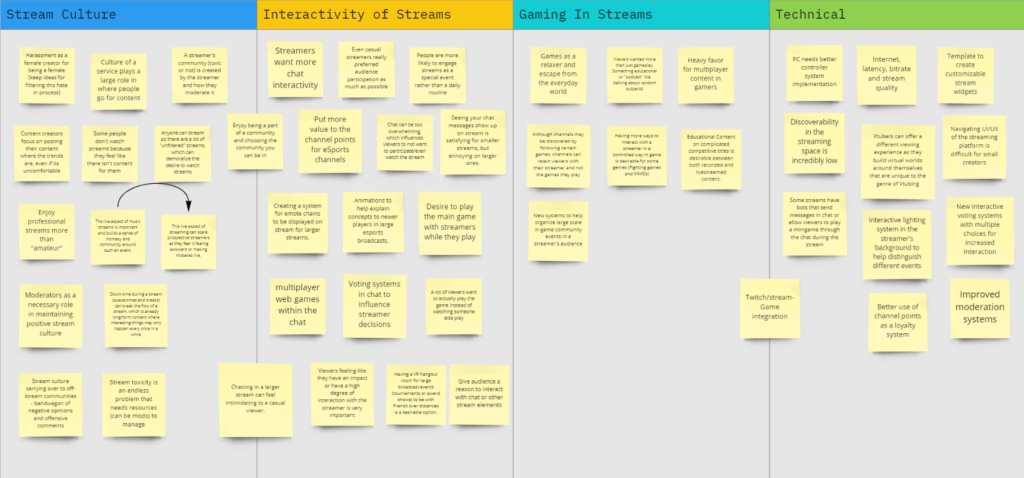
To follow up on these ideas, our next task was to identify individuals who were involved with or who interacted with this field and interview them. This would allow us to better identify the biggest or most common issues that streamers or avid viewers faced with streaming or watching streams. I personally interviewed keejunk, a small-time streamer and a good friend of mine, several individuals I knew who watched streams often in their free time (via Twitch), and a few small-time content creators on YouTube, to get a good range of responses.
Across all of my interviews, there were a few common responses from all of my interviewees in regards to what they enjoyed about content creation:
- Content creators enjoyed interacting with their audience, whether directly through their content or outside of it on social media.
- Content creators preferred participation over observation – that is, they enjoyed when viewers interacted with their content through stream chat, by leaving comments, and so on (as opposed to passively watching their content).
- Viewers also enjoyed interacting with streamers and content creators.
- The range of responses from individuals who identified as viewers varied more than responses from those who identified as content creators, suggesting that creator-viewer interaction is sought more often by creators compared to viewers.
In addition, there were a few key issues that were brought up by both sides of the table during these interviews:
- Content creators and viewers alike wanted more avenues that content creators and viewers could interact through.
- Streamers who streamed a lot of match-based games, like first-person shooters, disliked the downtime in-between matches and during match queues, and wanted to be able to do something to interact with chat better during this period.
- Stream viewers generally disliked watching streams as-is, and preferred doing something at the same time.
- Some viewers simply kept streams on as background noise, as a result.
During these interviews, I also asked the interviewees’ thoughts on Twitch’s channel points system. I watch Twitch streams on occasion, and noticed that channel points generally had very little use.
- Streamers and viewers both echoed this sentiment, and wanted channel points to expand to include more functionality.
After everyone on the team wrapped up their interviews, we reconvened to discuss our findings. Our interviewees all generally fell within the same demographic: teens to mid-20s who interacted with streams and other forms of content creation an hour per day on average. We also noticed a common response from our interviewees – they valued the live interaction that streams provided to viewers (and that viewers provided to streamers). They also felt that Twitch didn’t offer a lot of ways to facilitate this interaction aside from basic functions like live chat and polls. During our discussions, we also remarked on the uniqueness and fun found in stream events like Twitch Plays Pokémon, or The Jerma985 Dollhouse.
From our interviews, we drew a few conclusions:
- Streamers and viewers would both value a medium that both sides could participate in at the same time.
- Twitch, while being the most popular livestreaming platform, was still somewhat limited in the ways streamer-viewer interaction could take place.
The Idea Stage
With these findings, we asked ourselves a question: what could we design that would expand the ways for streamers and viewers to interact directly?
We threw a number of possibilities around.
- A fast-paced, short-form, lobby-style game that streamers could play alongside their viewers at any time.
- A virtual-reality streaming ecosystem that would add a new dynamic to streamer-viewer interaction.
- A Twitch extension that would expand the use of the channel point system, and offer a myriad of new ways to facilitate streamer-viewer interaction.
We spent roughly a week exploring each of these possibilities, comparing and contrasting their various characteristics. Eventually, we settled on the game option – game development was familiar territory for all of us, and the relatively steep learning curve associated with the other options would have severely hindered our ability to shape the project to our liking. Thus, the concept for Partyception was born: a fast-paced, browser-based, lobby-style game similar to games like Jackbox that focused on accessibility and ease-of-play.
Now came the fun part – actually developing the game!
The Development Stage - Deciding on Web Structure and Backend
The online nature of the game required us to build a game-to-server structure, something that was new to all of us. Fortunately, many of us did have experience with web programming and databases, so we could adapt this knowledge for our development purposes. Furthermore, the structure we had in mind would be pretty simple: the backend would consist of a web database, where each new game lobby would correspond to a unique database entry. These entries and any related information on the database would be cleared at the end of each game in order to maintain storage space.
[Work in Progress]






















